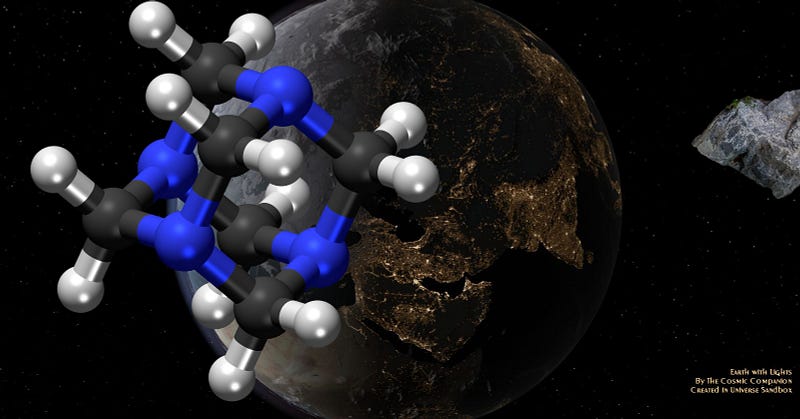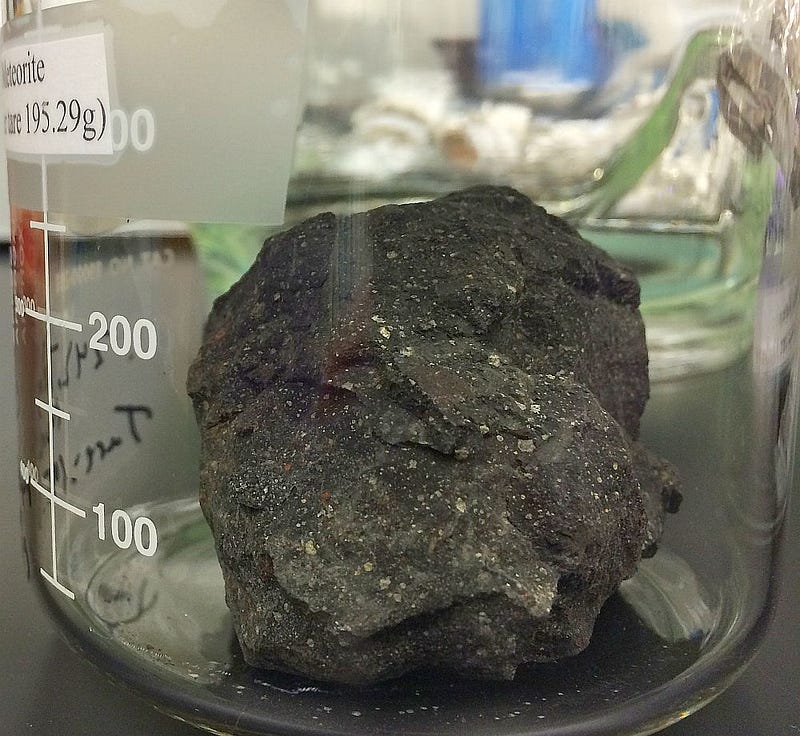Discovering Hexamine: A Vital Component for Life in Asteroids
Written on
Chapter 1: Introduction to Hexamine
Recent studies have revealed the presence of hexamine, a crucial component for life, inside an asteroid. But how did this vital substance remain unnoticed for so long?

Scientists from NASA and Japan have identified hexamethylenetetramine (HMT) within an asteroid. This chemical is instrumental in forming various organic compounds, including those essential for life's processes.
Life as we know it relies heavily on organic materials, primarily composed of carbon and hydrogen, often supplemented by oxygen, nitrogen, and additional elements.
Three distinct carbon-rich meteorites were found to harbor HMT. This compound, known for its use in treating urinary infections and in the production of explosives, could significantly contribute to the formation of organic materials in asteroids.
Section 1.1: The Role of Formaldehyde and Ammonia
The synthesis of amino acids and sugars often depends on formaldehyde and ammonia. However, these substances tend to decompose in the extreme conditions of space, leading researchers to wonder how large quantities of organic material might have formed within asteroids. The latest findings could provide insight into this enigma.
“HMT remains stable at room temperature and can generate both formaldehyde and ammonia when heated with liquid water in asteroids,” noted Yasuhiro Oba from Hokkaido University in Japan.
During the early days of our Solar System, asteroids experienced heating due to collisions and radioactive decay. Sufficient heat could cause HMT to break down into formaldehyde and ammonia, which could then react to form amino acids and other intricate organic molecules.
Subsection 1.1.1: Amino Acids and Their Importance
Amino acids are vital for producing proteins, which play essential roles in biological functions, including those found in hair and nails, and regulating chemical reactions.
The existence of organic compounds in asteroids has been a focus of extensive research; however, the mechanisms of their formation continue to intrigue scientists. Laboratory experiments indicate that combinations of water, ammonia, and methanol under space-like conditions can yield organic compounds, including HMT.

Researchers have shown that interstellar ice, which includes water and ammonia, can also contain notable amounts of methanol, suggesting that HMT should be prevalent in water-rich asteroids. Yet, it has never been detected in laboratory-examined asteroids until now.
The recent research implies that when hexamine is subjected to typical laboratory conditions, it may break down, which could explain why it was previously overlooked in samples that once contained the compound.
Section 1.2: Extraction Techniques
A unique extraction method was employed to isolate HMT while minimizing its degradation. This technique enabled the team to gather samples of hexamine from three meteorites that landed on Earth: Murchison, Murray, and Tagish Lake.
To ensure the hexamine detected in the samples was not contamination from Earth, researchers took great care with the Murchison meteorite, which was stored in a sealed container at the Chicago Field Museum. This meticulous handling ensured the Murchison sample was the most uncontaminated ever analyzed for amino acids.
Organic substances can arise from both abiotic processes and biological organisms. Researchers assert that “HMT, which can yield crucial prebiotic molecules like formaldehyde and ammonia upon degradation, is a likely precursor to meteoritic organic compounds of astrochemical and astrophysical significance.”
This discovery supports the hypothesis that complex organic materials may have rained down on Earth from space.
Chapter 2: The Future of Astrobiology
As we advance in our ability to analyze asteroid materials in laboratories, we are on the brink of new discoveries. Recently, 5.4 grams of material from the asteroid Ryugu arrived on Earth, courtesy of the Hayabusa2 mission. A larger sample from the asteroid Bennu will be delivered by the OSIRIS-REx mission in September 2023.
The secrets these missions hold remain to be unveiled, but they promise to broaden our understanding of life's origins.
James Maynard is the founder and publisher of The Cosmic Companion. Residing in Tucson, Arizona, he enjoys life with his wife, Nicole, and their cat, Max.
Did you find this article informative? Join us at The Cosmic Companion Network for podcasts, weekly video series, newsletters, and more!